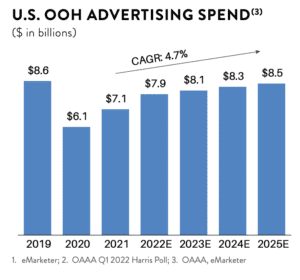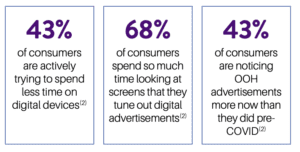Insider thanks Mark Boidman, Head of Media & Entertainment at Solomon Partners for permission to reprint this article.

As digital screen time continues to rise to unprecedented levels, consumers are feeling increased levels of digital burnout and screen fatigue. U.S. adults are currently estimated to spend over 8 hours per day with digital media (computers, mobile devices and other connected devices). Digital media consumption has more than doubled over the last decade(1). Although people of all ages have relied on digital devices and platforms during the COVID-19 pandemic to stay connected and entertained, prolonged screen time has also caused concerns relating to its impact on both physical and mental health. Over 40% of U.S. adults (and 57% of Gen Z / millennial adults) are actively trying to spend less time on digital devices(2), and with easing pandemic restrictions, consumers crave a return to real-life entertainment, travel, and experiences outside of their homes. These trends are highly favorable to the out of home (OOH) media channel, which continues to dip into the digital media wallet.

Unlike the digital media channel, OOH media assets exist in the physical world and cannot be blocked or skipped. While 68% of adults say they spend so much time looking at screens that they tune out digital advertisements, over 40% of adults are noticing OOH advertisements more now than they did pre-COVID(2). Solomon Partners’ 2017 Study also demonstrates the higher recall rate potential of OOH advertisements (up to 82%) vs. online advertisements (up to 57%). Creative OOH campaigns possess a unique ability to stand out among the increased digital noise, and recent successful OOH campaigns have generated huge volumes of residual impressions in mainstream news and social media.

These tangible OOH media assets are also far less vulnerable to fraudulent behavior such as “domain spoofing” in online advertisement auctions and bots that generate fake “impressions” on digital campaigns. As the OOH industry continues to benefit from ongoing technological innovation, mobile and geolocation data can verify that campaigns are reaching both a real audience and a targeted audience with improved precision. As these trends continue to transform the media industry in a manner that is highly favorable to OOH media, both advertisers and consumers continue to see the unique value in quality, physical OOH media assets in a world of digital distractions.
[wpforms id=”9787″]
Paid Advertisement

















